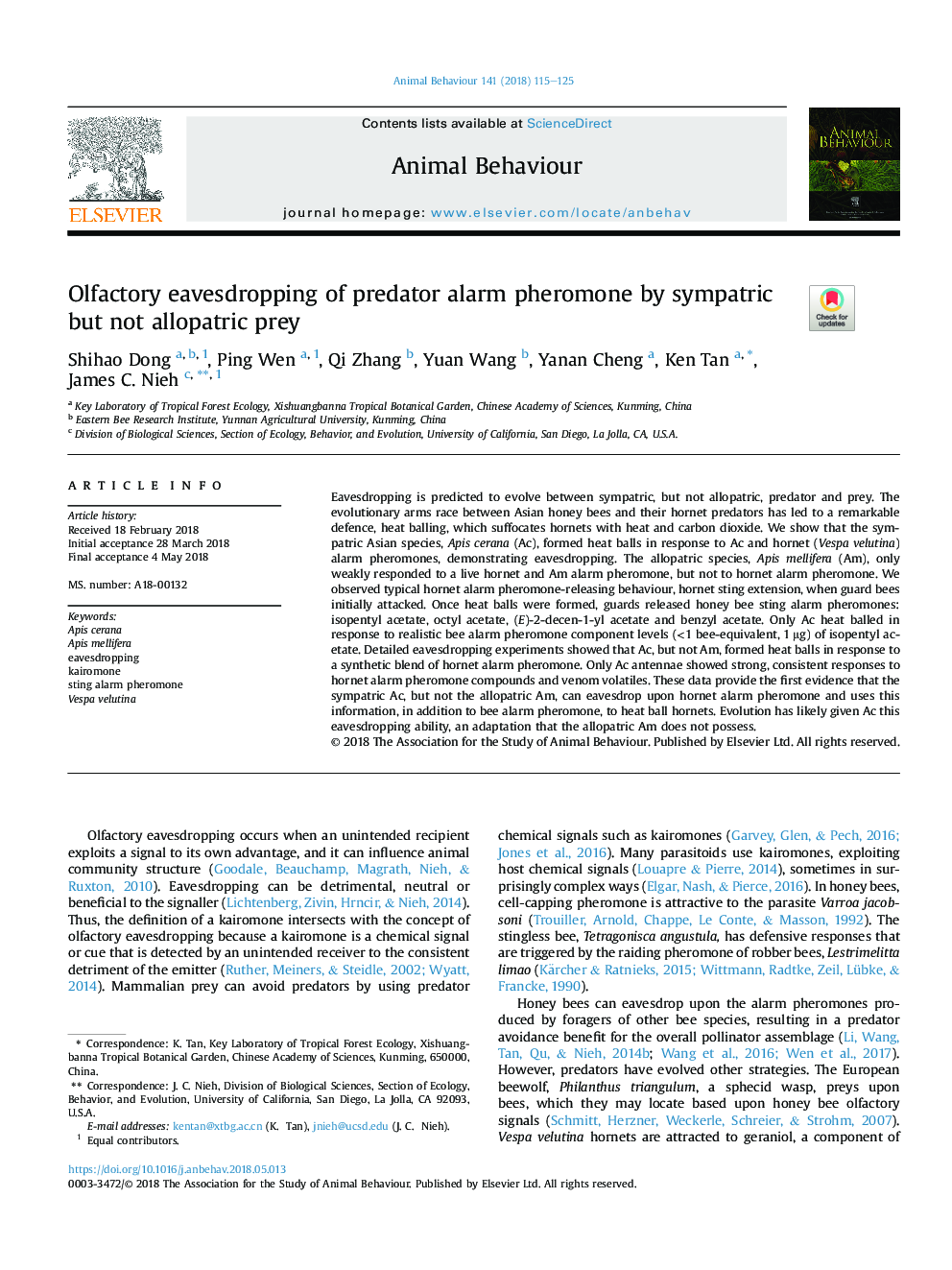| کد مقاله | کد نشریه | سال انتشار | مقاله انگلیسی | نسخه تمام متن |
|---|---|---|---|---|
| 8488488 | 1552187 | 2018 | 11 صفحه PDF | دانلود رایگان |
عنوان انگلیسی مقاله ISI
Olfactory eavesdropping of predator alarm pheromone by sympatric but not allopatric prey
ترجمه فارسی عنوان
احراز رعب و وحشت از فرمون زنگار شکارچی توسط سم پاتریک، اما نه آلوپاتریک
دانلود مقاله + سفارش ترجمه
دانلود مقاله ISI انگلیسی
رایگان برای ایرانیان
کلمات کلیدی
موضوعات مرتبط
علوم زیستی و بیوفناوری
علوم کشاورزی و بیولوژیک
علوم دامی و جانورشناسی
چکیده انگلیسی
Eavesdropping is predicted to evolve between sympatric, but not allopatric, predator and prey. The evolutionary arms race between Asian honey bees and their hornet predators has led to a remarkable defence, heat balling, which suffocates hornets with heat and carbon dioxide. We show that the sympatric Asian species, Apis cerana (Ac), formed heat balls in response to Ac and hornet (Vespa velutina) alarm pheromones, demonstrating eavesdropping. The allopatric species, Apis mellifera (Am), only weakly responded to a live hornet and Am alarm pheromone, but not to hornet alarm pheromone. We observed typical hornet alarm pheromone-releasing behaviour, hornet sting extension, when guard bees initially attacked. Once heat balls were formed, guards released honey bee sting alarm pheromones: isopentyl acetate, octyl acetate, (E)-2-decen-1-yl acetate and benzyl acetate. Only Ac heat balled in response to realistic bee alarm pheromone component levels (<1 bee-equivalent, 1 μg) of isopentyl acetate. Detailed eavesdropping experiments showed that Ac, but not Am, formed heat balls in response to a synthetic blend of hornet alarm pheromone. Only Ac antennae showed strong, consistent responses to hornet alarm pheromone compounds and venom volatiles. These data provide the first evidence that the sympatric Ac, but not the allopatric Am, can eavesdrop upon hornet alarm pheromone and uses this information, in addition to bee alarm pheromone, to heat ball hornets. Evolution has likely given Ac this eavesdropping ability, an adaptation that the allopatric Am does not possess.
ناشر
Database: Elsevier - ScienceDirect (ساینس دایرکت)
Journal: Animal Behaviour - Volume 141, July 2018, Pages 115-125
Journal: Animal Behaviour - Volume 141, July 2018, Pages 115-125
نویسندگان
Shihao Dong, Ping Wen, Qi Zhang, Yuan Wang, Yanan Cheng, Ken Tan, James C. Nieh,
